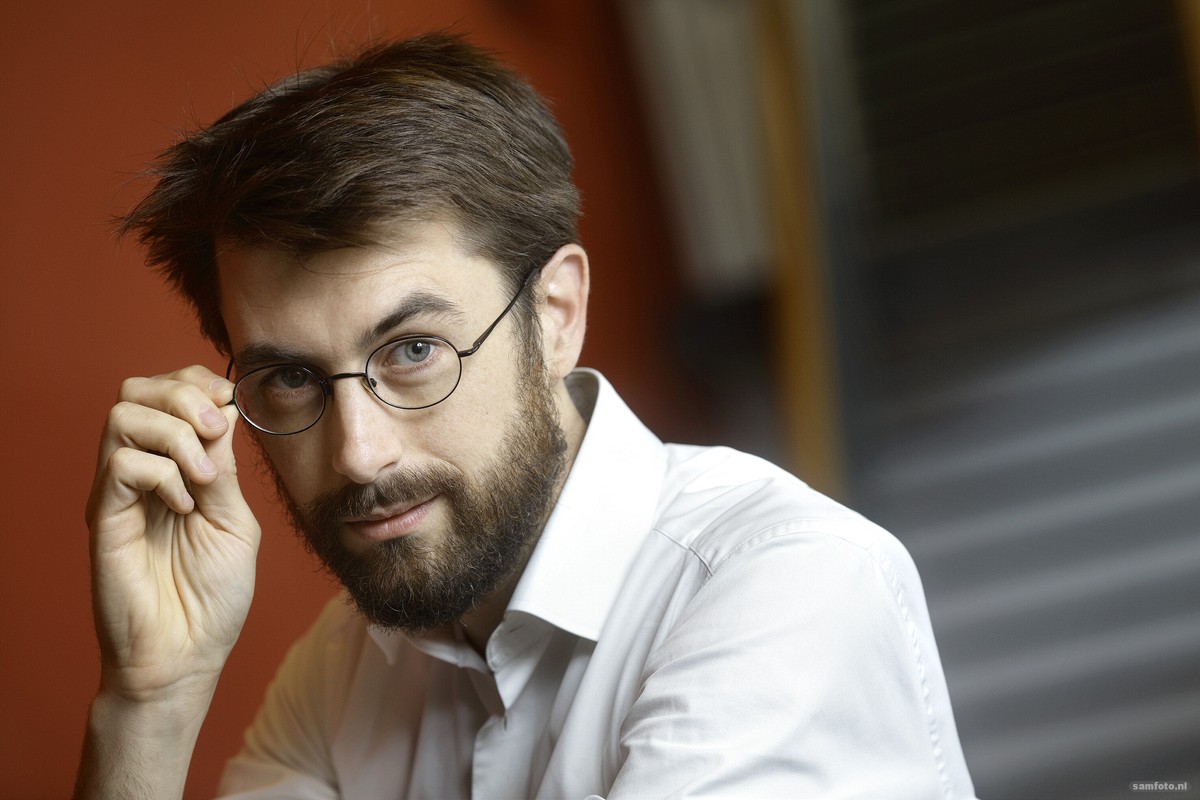Last week when I got into the elevator at the Faculty, as the doors were closing behind me, I could just overhear from the hallway: ‘Hey, cool! That was Bob in real life!’
(Photo: Sam Rentmeester)
This year, my relationship with the 700 first year students at Mechanical Engineering is a little bit different. I almost feel like a well-known vlogger.
It’s a part of online education that I did not expect. When I pass students in the hallway, I can see them think: ‘Oh, look! He’s a real person!’ My response to them is similar: ‘Oh, look! These must be the people who I saw in the chat yesterday!’ And so we cheerfully wave at each other.
Every Monday, I give live and interactive lectures on YouTube (videos in Dutch). It feels surprisingly personal. And my students are enthusiastic. While I used to be happy if I still had over 50% attendance halfway through the quarter, I now still have more than 500 people online. And while I used to be pleased when a good half of those present would raise their hands, now more than 80% take part in polls and there are so many answers in the chat in response to open questions that I simply can’t keep up.
It helps that everything went smoothly right from the start. No connection issues, poor sound, clunky camerawork, or long delays between chat and stream. Because although lecturers for whom this was different may not have gotten any direct complaints, on the first year students’ private Discord channel, there were quite a few frustrated and disappointed comments. The term ‘Collegedrama’ is here to stay, I fear.
In addition I went a little bit overboard with my set-up. I have two cameras that I can switch between; I found a safe and quick way to allow all those hundreds of students to share their hand-drawn mechanisms in real time; I make sure I have relevant polls each week; and I finish every lecture with a mini quiz and feedback form (links in Dutch).
I happen to enjoy messing around with computers and websites. That hobby serves my well these days. But I understand very well if others keep it all a bit simpler. In fact, I’m starting to wonder how effective live online lectures can actually be, even if you pull out all the stops didactically, and even if everything runs smoothly.
Unfortunately, the level of students’ enthusiasm is not a good measure for how effective their learning is. For instance, it’s remarkable how often students who’ve earlier shown themselves to be diligent and reasonably well-prepared, ask questions about things that I’ve just calmly and explicitly explained.
That chatbox next to my head is a massive distraction
Almost all research on education involves the finding that dividing your attention is deadly to your chances of remembering much of a lesson. And that chatbox next to my head – which is crucial for interaction – is a massive distraction, of course. Perhaps especially for active and enthusiastic students. After all, none of these online platforms are designed for you as the broadcaster to be able to closely direct the attention of your viewers. More chat messages equals more ‘engagement’. And that’s what YouTube wants. And then there are all those other channels, apps, and websites that students have open in addition to your lecture …
It turns out that online education can be quite ‘gezellig’. Much more so than I had expected. But I’ve become less optimistic about how effective live online lectures can be.
Bob van Vliet is a lecturer at the 3mE Faculty and is specialised in design education. Reactions are welcome via B.vanVliet@tudelft.nl
Bob van Vliet / Columnist



Comments are closed.